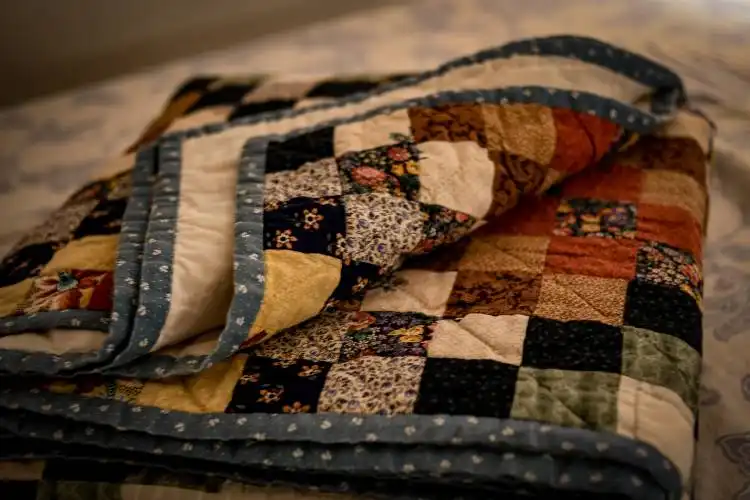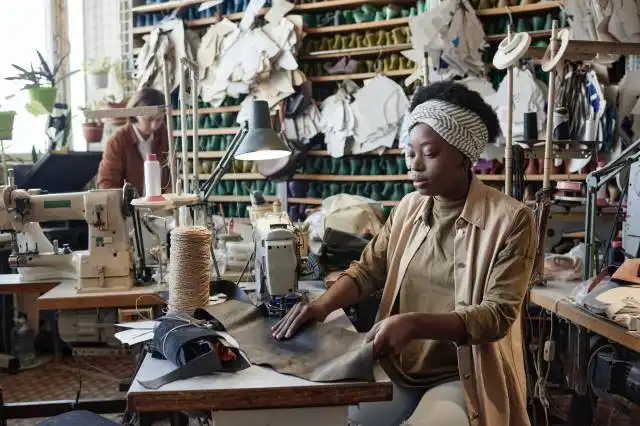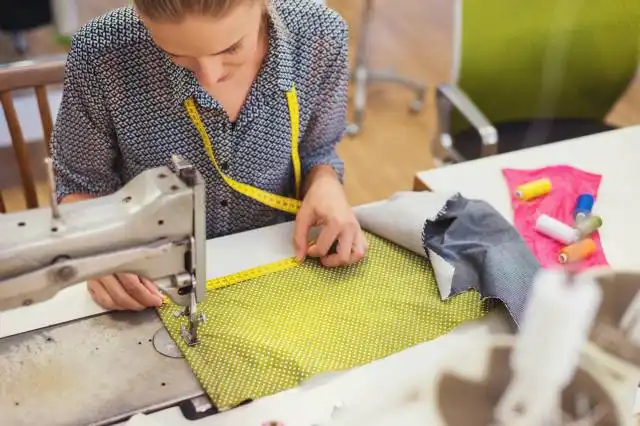Start a Basket Weaving Business
Invoking Rustic Charm: Profit from Your basket-Weaving Passion
| Updated


BASKET WEAVING BUSINESS
Thinking of a hobby turned profit? Look no further than a quaint basket weaving business! This venture incorporates crafting hand-woven baskets from various materials like wicker, straw, and even synthetics. Imagine becoming the go-to source for people seeking that rustic charm in their homes, or a unique picnic arrangement, or even a nostalgic Easter memory! It's a business that combines creativity and the sense of touch, offering a product with both functional use and aesthetic value.
Jump to Business Plan
RELATED BUSINESS IDEAS
Browse ALL Arts & Crafts Business Ideas
Discover Your Perfect Domain
Unlock the door to your online success with our hand-picked selection of premium domain names. Whether you're starting a new venture or rebranding an existing one, the right domain can set the tone for your digital presence. Browse through our curated list, each with its unique potential to enhance your brand's visibility and credibility.
BASKET WEAVING MINI BUSINESS PLAN
This a quick reality check to help you identify the strengths and weaknesses of your business concept before you dive in.
Expected Percent Margin:
- Gross Margin: 40-60%
- Net Profit Margin: 15-25%
Earnings Expectations:
- Daily Earnings: $100 - $300
- Weekly Earnings: $700 - $2,100
- Monthly Earnings: $3,000 - $9,000
- Annual Earnings: $36,000 - $108,000
Actions to Hit Those Numbers:
Inventory Management:
- Initial Investment: At least $1,000-$2,000 for quality weaving materials.
- Supplier Network: Build a relationship with local or online suppliers for consistent material access.
Marketing and Customer Acquisition:
- Website: Foster a comprehensive and user-friendly website to display/create your online store.
- Social Media: Regularly post your creations on platforms like Instagram, Pinterest, and Etsy.
- Local Craft Fairs: Participate in local markets and craft fairs for physical exposure.
Sales and Customer Experience:
- Diversity: Offer a variety of basket types, sizes and designs to attract different customers.
- Workshops: Hosting basket-weaving workshops can create another avenue of income.
Cost Control:
- Home-Based: Save on commercial rental costs by initially running the business from home.
- Postage and Packaging: Factor in these costs when pricing products if selling online.
Business Operations:
- Production: Aim to produce and sell 3-6 baskets per day. Balance quality with quantity.
- DIY Kits: Consider selling DIY basket weaving kits with instructions as an additional revenue stream.
Remember, these are estimates and the actual figures could vary depending on a wide range of factors such as the price of materials, the specific marketplace you are operating within, and your ability to market your products effectively. Always thoroughly research and plan before starting a new business endeavor.
NOT WHAT YOU HAD IN MIND? Here are more ideas



Browse ALL Arts & Crafts Business Ideas
Grab Your Business Website Name
Before you get caught up in the whirlwind of setting up your business, invest in a domain name. It's a small but significant step that lays the foundation for your brand and makes it easier for customers to find and trust you. Just like you wouldn't build a house without securing the land first, don't build a business without securing your domain name.
"Why? Can't that wait?" Here's why it shouldn't
Step 1: Determine if the Business is Right for You
Startup Expenses
Before starting a basket weaving business, it is important to understand the costs associated with launching the business. This includes the cost of materials, such as the basket weaving supplies, as well as the cost of marketing and advertising. Additionally, the cost of renting a workspace or purchasing equipment should be taken into consideration. It is important to research the cost of materials and equipment in order to ensure that the business is financially feasible.
Ongoing Expenses
After the initial startup costs, there are additional ongoing expenses that must be taken into consideration. This includes the cost of labor, such as hiring employees or subcontractors, as well as the cost of maintaining the workspace and equipment. Additionally, the cost of marketing and advertising should be taken into consideration, as it is important to keep the business visible in order to attract customers.
Examples of Ways to Make Money
There are a variety of ways to make money with a basket weaving business. This includes selling the baskets directly to customers, as well as selling them at craft fairs and markets. Additionally, the baskets can be sold online through an e-commerce website or through social media platforms. Additionally, the business can offer custom basket weaving services, such as creating personalized baskets for customers.
Step 2: Name the Business
When naming a business, it is important to choose a name that is memorable and unique. It should also be easy to pronounce and spell. Additionally, it should be relevant to the product or service that the business provides. It is also important to make sure that the name is not already taken by another business.
When selecting a name, it is important to consider the target audience. For example, if the business is targeting a younger demographic, a more modern name may be more appropriate. On the other hand, if the business is targeting an older demographic, a more traditional name may be more suitable.
It is also important to consider the type of business. For example, if the business is a basket weaving business, the name should reflect this. Additionally, the name should be easy to remember and should be able to stand out from the competition.
Once the name has been chosen, it is important to make sure that the name is legally available. This can be done by checking with the local government to make sure that the name is not already taken. Additionally, it is important to make sure that the name is not trademarked or copyrighted.
Finally, it is important to make sure that the name is available for use on the internet. This can be done by checking with domain name registrars to make sure that the name is available. Additionally, it is important to make sure that the name is available on social media platforms. This will help to ensure that the business is easily recognizable online.
Step 3: Develop a Business Plan
Strategy
Step 3: Develop a Business Plan
Outline Goals and Objectives
Creating a business plan is essential to the success of any business, and basket weaving is no exception. It is important to outline your goals and objectives for the business. This should include a timeline for when you plan to have certain milestones achieved. For example, you may want to have a certain number of customers within the first year, or a certain amount of revenue. Additionally, it is important to set goals for yourself, such as how many baskets you want to make each month, or how many classes you want to teach.
Identify Target Market
It is important to identify your target market when creating a business plan. This will help you determine who your ideal customer is and what type of baskets they may be interested in. Additionally, it will help you determine the best way to market your business and where to focus your efforts. You can identify your target market by researching the demographics of your area, as well as the types of baskets that are popular in your area.
Determine Pricing Strategy
Once you have identified your target market, it is important to determine your pricing strategy. This will help you determine how much to charge for your baskets, as well as any additional services you may offer. Additionally, it will help you determine how to structure your pricing to maximize profits. You should also consider any discounts or promotions you may want to offer, as well as any payment plans or financing options you may want to offer.
Step 4: Obtain Necessary Licenses and Permits
Research Local Requirements
Before applying for any licenses or permits, it is important to research the local requirements. Depending on the location, there may be different regulations and requirements for basket weaving businesses. For example, some states may require a business license, while others may require a special permit. Additionally, some cities may have zoning regulations that restrict certain types of businesses. It is important to research the local regulations to ensure that the business is in compliance.
Apply for Licenses and Permits
Once the necessary research has been completed, the next step is to apply for the necessary licenses and permits. This process can vary depending on the location, but typically involves filling out an application and submitting it to the local government agency. Additionally, there may be fees associated with the application process. It is important to make sure that all the necessary paperwork is filled out correctly and submitted in a timely manner. Once the application is approved, the business will be able to operate legally.
Step 5: Find a Location
Considerations for Location
When deciding on a location for a basket weaving business, it is important to consider the size of the space needed, the cost of the space, and the proximity to customers. Depending on the size of the business, the space needed could range from a small room in a home to a large warehouse. It is important to consider the cost of the space and if it is within the budget of the business. Additionally, the location should be close enough to customers so that they are able to easily access the business.
Leasing or Purchasing a Space
When deciding on a location, it is important to consider if it is better to lease or purchase a space. Leasing a space can be beneficial because it allows the business to save money and not have to worry about maintenance costs. However, purchasing a space can be beneficial because it allows the business to have more control over the space and build equity. It is important to consider the pros and cons of both options before making a decision. Additionally, it is important to consider the local zoning laws and regulations to ensure that the business is in compliance.
Step 6: Purchase Supplies
Types of Supplies Needed
When starting a basket weaving business, it is important to purchase the necessary supplies. These supplies can include different types of reeds, dyes, and other materials. Depending on the type of baskets you plan to make, you may also need to purchase a loom, tools, and other equipment. Additionally, you may need to purchase packaging materials and other items to help with the completion of your baskets.
Sources for Supplies
When it comes to purchasing supplies, you have a few options. You can purchase supplies from a local craft store or online. If you plan to purchase supplies online, make sure to read reviews and compare prices. Additionally, you can purchase supplies from a wholesaler or directly from the manufacturer. This can be a great way to save money and get the supplies you need in bulk. Lastly, you can also purchase supplies from a local basket weaving guild or association. This can be a great way to get advice and tips from experienced basket weavers.
Step 7: Market the Business
Step 7: Market the Business. Developing a marketing plan is essential for any business. It should include a budget, target audience, and strategies for reaching potential customers. A good marketing plan should also include a timeline for implementation. Utilizing social media is a great way to reach a wide audience. Platforms such as Facebook, Twitter, and Instagram are great for connecting with potential customers. It is important to post regularly and engage with followers. Creating a website is also important for any business. It should include information about the business, contact information, and a portfolio of products. It is also a great way to showcase customer testimonials and reviews. Additionally, having an online store can be beneficial for customers who want to purchase products online. It is important to make sure the website is easy to navigate and secure.
Step 8: Set Up Accounting System
Record Keeping
It is important to keep accurate records of all income and expenses related to the business. This can be done through the use of a spreadsheet, accounting software, or a combination of both. It is important to keep track of all sales, purchases, and payments made to suppliers. This will help to ensure that all taxes are paid on time and that the business is running efficiently.
Tax Requirements
It is important to understand the tax requirements for a basket weaving business. Depending on the location and type of business, there may be different tax laws that must be followed. It is important to research the local, state, and federal tax laws to ensure that all taxes are paid on time and in full. Additionally, it is important to consult with a tax professional to ensure that all taxes are paid correctly and on time.
Step 9: Hire Employees
Considerations for Hiring
When starting a basket weaving business, it is important to consider the type of employees to hire. Depending on the size of the business, it may be necessary to hire full-time employees or part-time employees. Additionally, it is important to consider the skills and experience of the employees. It is important to hire employees who have experience in basket weaving or a related field. Furthermore, it is important to consider the cost of hiring employees. The cost of hiring employees should be factored into the overall budget for the business.
Training Employees
Once the right employees have been hired, it is important to provide them with the necessary training. This training should include both basket weaving techniques and customer service skills. It is important to ensure that all employees are familiar with the products and services offered by the business. Additionally, it is important to provide employees with the necessary safety training. This training should include proper handling of materials and tools, as well as proper safety procedures. Finally, it is important to ensure that all employees are familiar with the company policies and procedures.
EXPLORE MORE CATEGORIES
Browse ALL Business Idea Categories
TAKE THE NEXT STEPS










